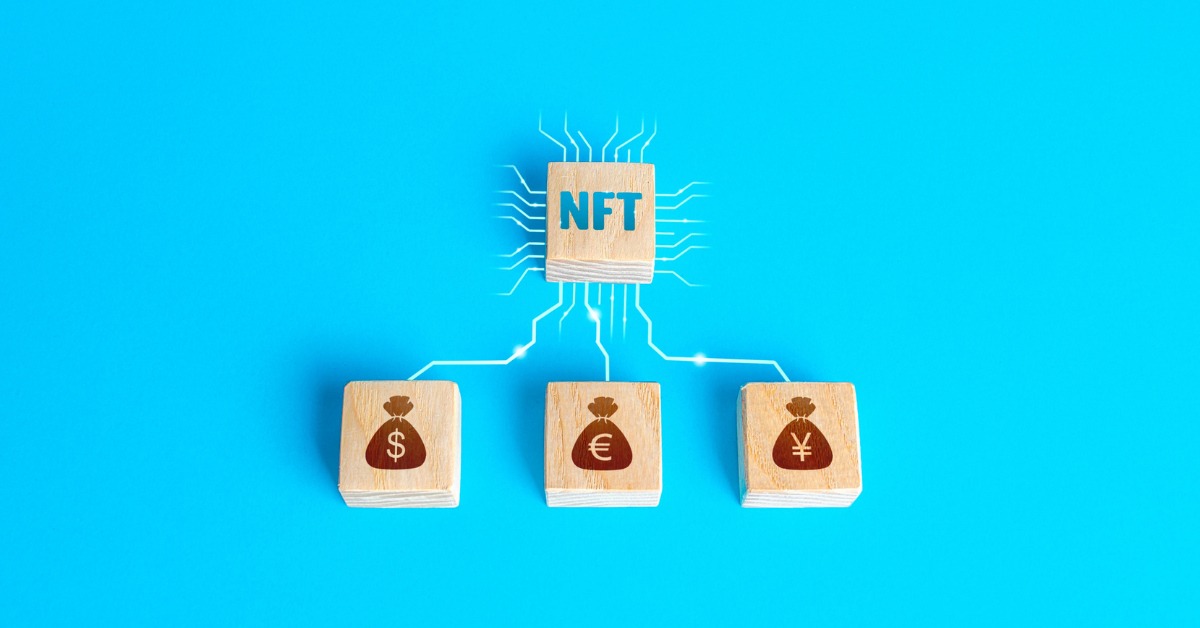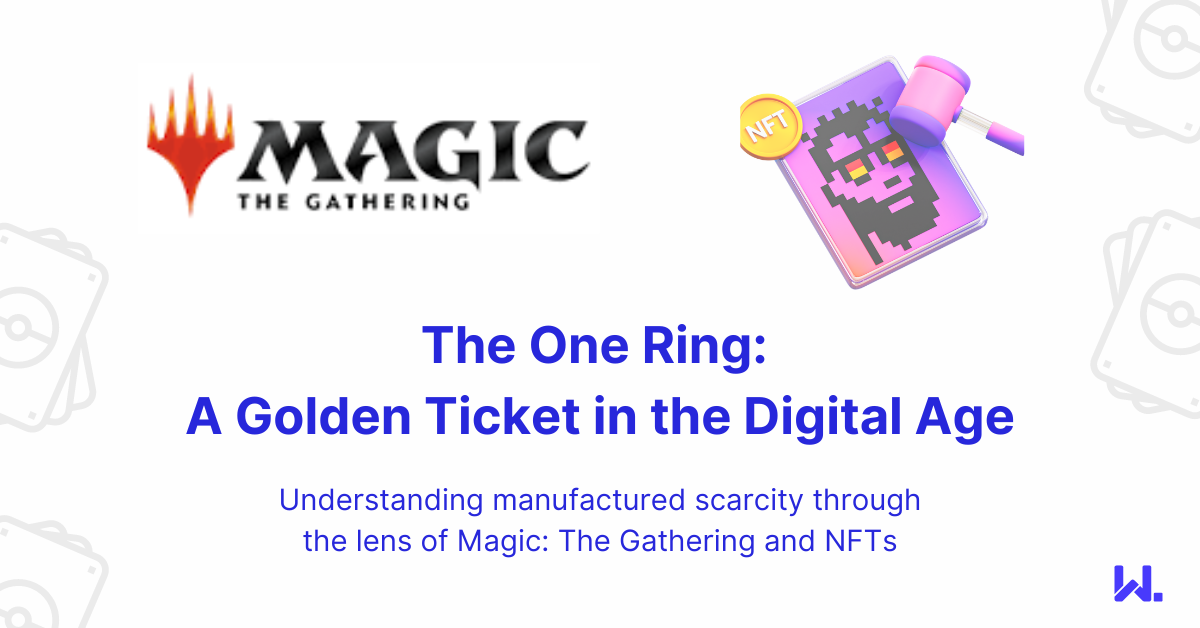NFTs vs. Collectables: The Thrill of the Chase
Perceived scarcity is a big driver of value. In no place has this been more visible than in the world of NFTs during the past 12 months. Collectors, investors and speculators have all flocked to NFTs trying to secure exclusive releases with the hope that these NFTs' value will significantly appreciate over the coming days, months or years. Many have aspirations that their investment will go the way of Cryptopunks, Bored Ape Yacht Club (BAYC) or some of Beeple's high profile works. But the likely reality is that much of this will go to zero, as we all know when the crowds start jumping into these investments based on the returns of an early few, it's time to look for the exit.
Even if you are one of the lucky few to see a significant return on an NFT, the likelihood of being able to take action to capture the upside whilst you're in the money is slimmer still. The point is that we all know the NFT markets are incredibly frothy at present, and they will likely stabilise at some point, but when they do, is the future of the majority of art or collectables on-chain as NFTs? I believe not.
Why some things are better left off-chain
Whilst I do believe that NFTs as an asset class are here to stay and that they're going to spread far wider in the industries they touch (see my last post for more on this), in the context of art and collectables I see them as complementing these existing physical segments, rather than being successors. The reason is the thrill of the chase.
The transparency and traceability of assets stored on blockchains are considered significant benefits of this technology. In the context of the supply of a digital asset having the rules that govern its supply baked into a protocol provides an unparalleled amount of visibility for its users, which is a major reason why Bitcoin and other cryptocurrencies gained so much popularity — due to this notion that they cannot be tampered with in the same way that monetary policy of fiat currencies can be.
This approach isn't foolproof, as there are override mechanisms in place, Tether freezing USDT accounts is one such example (what happens to these funds once frozen is an interesting question in itself), this idea of visibility of on-chain activity is something that users of blockchain protocols are accustomed to.
This of course extends to individually unique assets that are stored on-chain, such as NFTs. But when it comes to deliberately scarce or collectable items, does everyone want all of these to exist on-chain? There are benefits to providing ownership and provenance of assets on a decentralized ledger, but is that what we all want? Do I always want to know how many copies of a scarce item have ever been created simply by referring to a blockchain, and who the owners are?
Having collectables on-chain could lower the scarcity premium
Whilst this does appear to be reasonable enough on the surface, I believe by going deeper into the human psyche, it isn’t the desire of everyone. There are many areas of life where it is the thrill of the chase — the notion that the anticipation of something outweighs the reward itself, that is so exciting. In my opinion, this is an area where everything being on-chain dampens the potential dopamine hit of finding or securing that elusive thing you've been searching for.
For example, let’s consider the collectable card game 'Magic: the Gathering', where players do battle with other players by casting spells, using artefacts, and summoning creatures using cards, which have different scarcity attributes about them (common, uncommon, rare and mythic rare). There's a very vibrant trading scene among players and collectors. So much so that, the most expensive card from the game sold for $511,100 last year. Whilst this card is widely understood to be scarce, no one knows exactly how many of these autographed cards exist, and no doubt there are collectors out there trying to find more of these elusive cards.
Or another example is the metal detectorist who found a 13th-century gold coin that sold for £648,000 a couple of weeks ago. There was no way of knowing this coin existed in advance of its discovery. Record cratediggers, philatelists and antiquarians are all prominent further examples of this.

Imagine if in the future items were represented by an NFT instead, which may even be digitally signed. Thanks to it residing on a blockchain, you as an interested collector can in an instant ascertain how many of them exist and see if any owners are willing to sell them. This significantly reduces the scarcity premium, as all the information you could ever know about this exists on-chain. Whilst in some instances the keys to manage these assets get lost, there's no opportunity to find obscure NFTs in a yard sale, or attic where it’s been gathering dust for decades. This physical digging is one of the big drivers for collectors.
To appreciate this from some other fewer niche perspectives, imagine if when it came to dating or searching for a partner, you had all the information available about potential matches at your fingertips. Based on the area you lived in, you could see exactly how many single people there were you perceived were compatible with you.
Whilst this sort of overbearing, controlling society is usually the setting for a sci-fi novel, the point is that if everything scarce lives on-chain, you remove the excitement of discovering it, and this is why I don't believe that the NFT market will replace many of the existing markets for collectables. People are easily addicted to the dopamine rush associated with this thrill of the chase, and in no place is it more evident than on smartphones. What is a notification in this context after all? It is your phone interrupting you to tell you that something has happened.
The something here could be almost anything depending on how strict you are with your notifications, and at what point are you most excited by it? When you hear that ding, feel that buzz. You don't know what it is, but you want to know, it is the uncertainty that creates that thrill inside you, releases the dopamine hit, then you look at your phone, you see someone has sent you an email which requires you to create a report, your spouse is asking you to run an errand, or perhaps it’s your kid’s school telling you that your child is sick and needs to come home.
Whatever it is, this so-called reward is very rarely that. However, for a few seconds, you feel that thrill inside you of what it could be that lights you up, and it is this raw thrill that people will continue to engage with. This is why, whilst NFTs have a very bright future, I don't envisage people wanting everything to be on-chain, as the harder the chase, the bigger the thrill.
Have any questions or comments? We’d love to hear from you! If you want to find out more about blockchain, its growth, and newest developments, then check our blog or listen to our enlightening Blockchain Innovators podcast.

